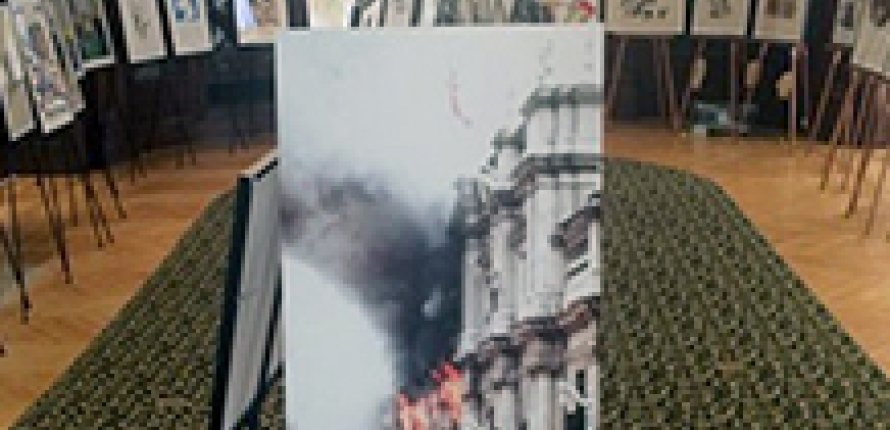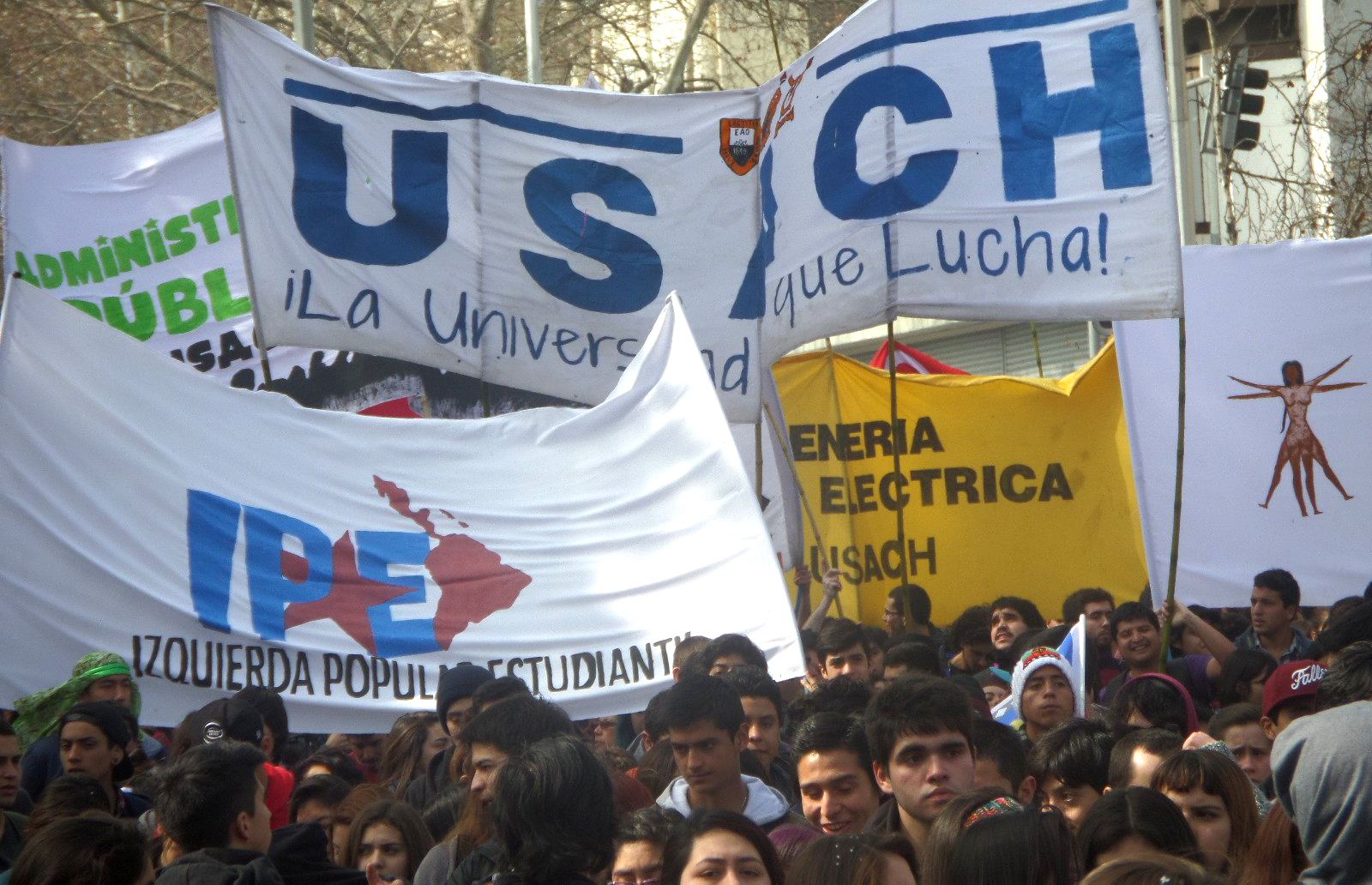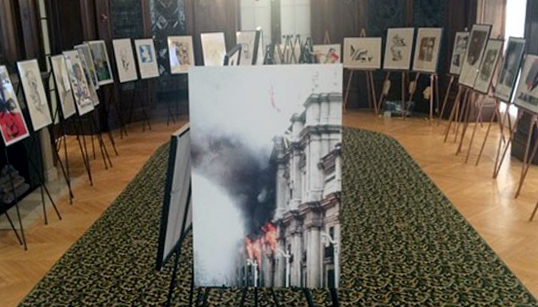Learning About the Past to Face the Challenges of the Present

Priscilla Gac-Artigas, Professor of Literature, Monmouth University
2014-2015 Core Fulbright U.S. Scholar to Chile
When you travel to a foreign country as a Fulbright Scholar, to get to know that country you need to go far beyond the cultural immersion being in the country represents. You need to peel back the layers and immerse yourself in the country´s history, in its scars and beauties, in its sufferings and hopes, because understanding them helps you understand the relevance of your task as a Fulbrighter.
During my six months in Chile in fall 2014 (spring in Chile) I learned that an experiment is more relevant when you open the windows and allow air and life to invade the laboratory.
I arrived in Santiago in September, right before the dates of two pivotal events that mark Chile’s history: September 11, the anniversary of the 1973 military coup, and September 18-19, Independence Day or “las fiestas patrias.” A few days after the start of the semester, there was a protest organized by student organizations to demand free, quality education. I was working with the students and faculty of the Linguistics and Literatures Department at the Universidad de Santiago (USACh) on how to improve writing skills to develop critical thinking skills. During the process of meeting the students and getting to know my colleagues and the country, many questions invaded my mind. I found answers to most of these questions not in the classroom but in the streets. I came to perceive reality through the eyes of the student protestors.

The second event, marked by my first earthquake experience in Chile, was of equal significance. I was on my way to the theater to attend a concert by the Chilean Philharmonic Orchestra under the musical direction of Juan Pablo Izquierdo. Before entering the hall, a different tremor shook my soul and the soul of my Chilean husband. The walls of the lobby were covered with pictures by one of the most prominent Chilean artists, Guillermo Núñez. We were moved for two reasons. First, we had known Guillermo in exile in Paris. And second, when I was a student in Paris and became member of the “Théâtre de la Résistance-Chili,” a Chilean theater group in exile, we took many of his works on a traveling art exhibit to 18 international festivals through France and elsewhere in Europe. Word and image did not travel alone, and the paintbrushes kept us company.
The fact that so many years later in Santiago at the entrance of the Universidad de Chile Theater Hall, Núñez’s pictures joined the music to express the soul of a country made my body shiver. And those two events at the beginning of my stay - the tears shed in the streets and the communion of art and music in the theater - wiped away preconceived ideas about my host country and allowed me to see it from a different perspective, and to imagine the full extent of my role as a Fulbrighter.
It was at this privileged moment that I realized the importance of assuming the mantle of history and sharing my knowledge about it with others. It does not mean to live in the past. It means that learning about past events and understanding how those events shape the present can help us understand the roots of the world that surround us so we can envision better ways to face the challenges the future may bring our way.
Upon my return home to the United States, I began pondering and discussing with my husband how I could become the best ambassador of Chile, my Fulbright country, and of its people, their culture, their history, and their lives. An opportunity came my way when, as members of the Academia Norteamericana de la Lengua Española, we both had the chance to attend the VII meeting of ASALE (Association of the 22 Spanish language academies) in March 2016 in San Juan, Puerto Rico. During that trip to my country of origin, my husband and I were confronted with the remains of our failed attempt to return to Chile in 1984: the boxes that contained the artwork that traveled with us in Europe. For 32 years those boxes remained unopened at my childhood home on the island. When we opened them, we saw with surprise that all the art, the prints, and the pictures were intact: 45 original prints (24 of them numbered) by three Chilean National Art Awardees, José Balmes, Guillermo Núñez, and Gracia Barrios, as well as others by Alejandro Marcos, Ernest Pignon-Ernest, and Eduardo Berroeta; 25 posters by renowned artists such as Joan Miró and Jack Ottaviano, which retrace a decade of cultural solidarity events in Europe; 50 pictures of the 1973 coup by photojournalists from the former Gamma press agency; and 25 professional photos of performances by Théâtre de la Résistance-Chili.
We brought them to the United States and “Memorias, Geography of a Decade: Chile 1973-1983” saw daylight a few months later in September 2016 at my home institution, Monmouth University in New Jersey.

It was a touching experience to share with my colleagues and students the history of a decade that affected the life of so many people, that changed the history of so many Latin American countries, and that impacted the history of so many countries including ours. The exhibit establishes a conversation in which art, theater, and political engagement join to showcase the impact that pivotal events can have in the evolution of the cultural expression of a nation. Observing the artifacts, we witness a pivotal moment in Chile's history through the lens of its artists and the personal journey of a theater director and playwright forced to live and create in exile in Paris.
This is how the opportunity of visiting Chile as a Fulbrighter impacted my life and how my experiences in Chile triggered the shaping of the exhibit “Memorias, Geography of a Decade: Chile 1973-1983.” From March 23 to April 16 the exhibit will be on display at the Instituto Cervantes in New York, and I hope it can travel throughout all the country to be appreciated by as many people as possible. For those interested, you can also see some of the artworks and become acquainted with this part of Chile’s history in this virtual gallery.
It makes me happy and proud that through the exhibit I am able to contribute to advance the mutual understanding of our nations, our mission as Fulbrighters, by sharing with students and audiences in the United States the experiences that helped craft the artistic expression of Chile as a nation so they can inspire and open the minds of our younger generations.
